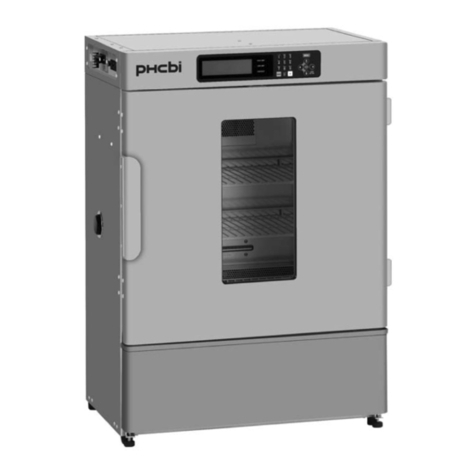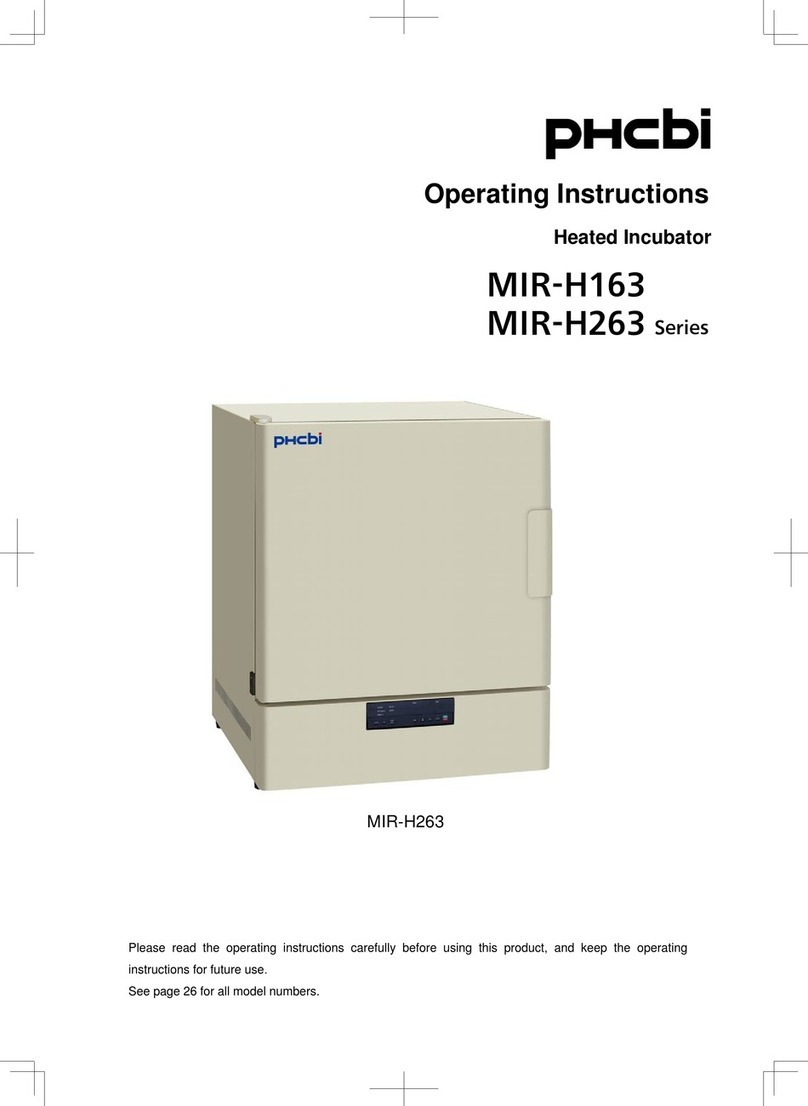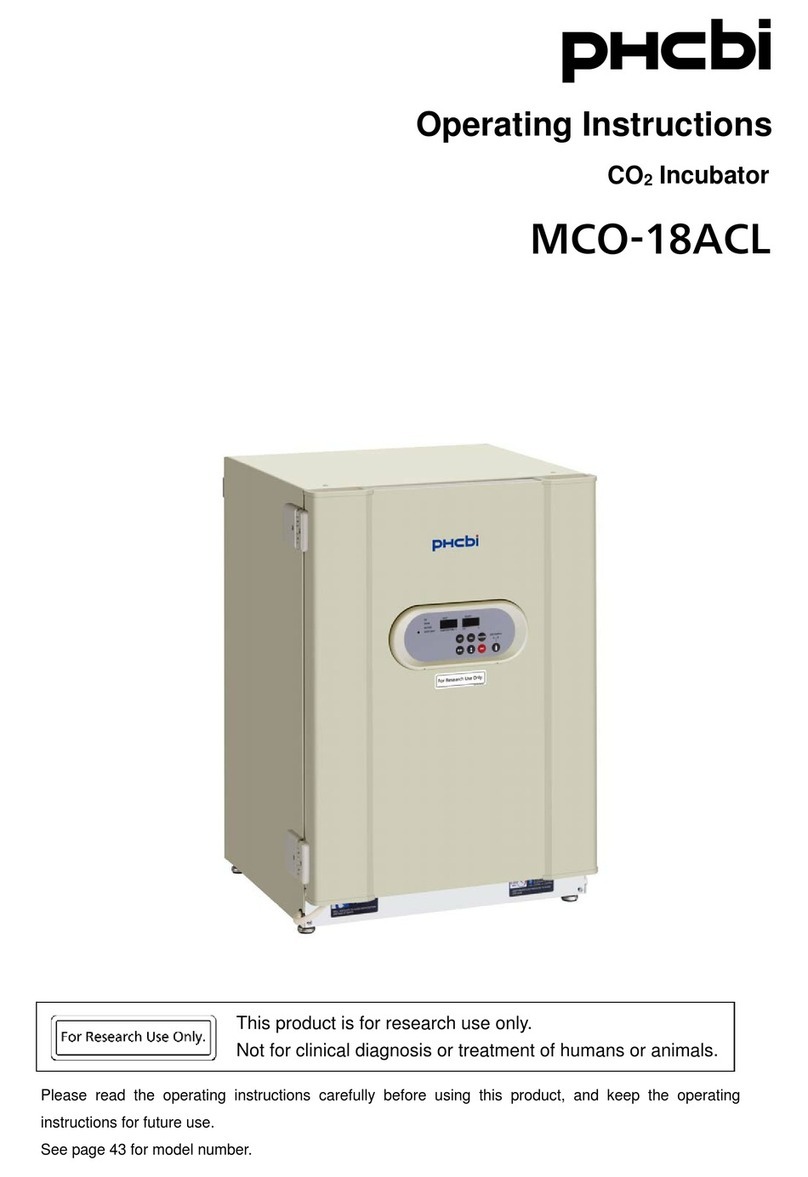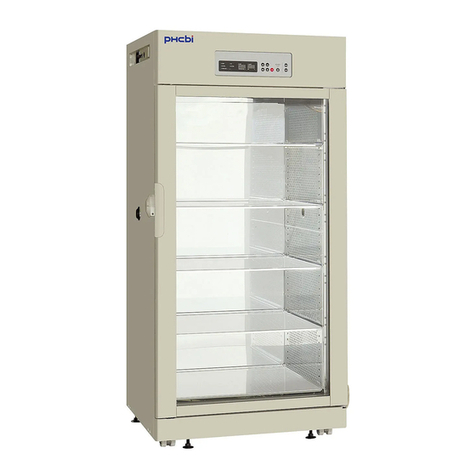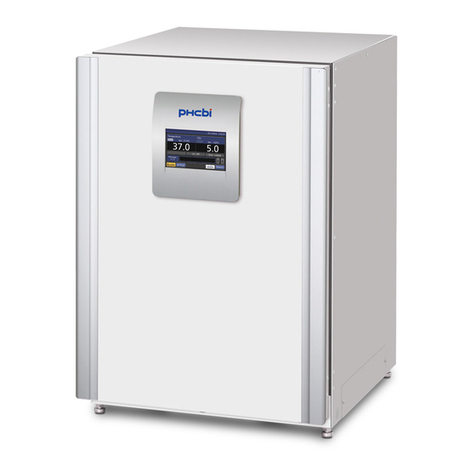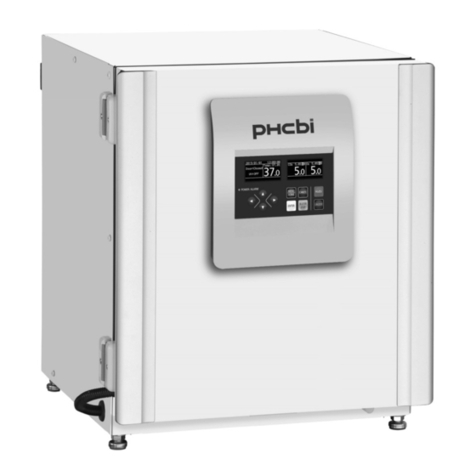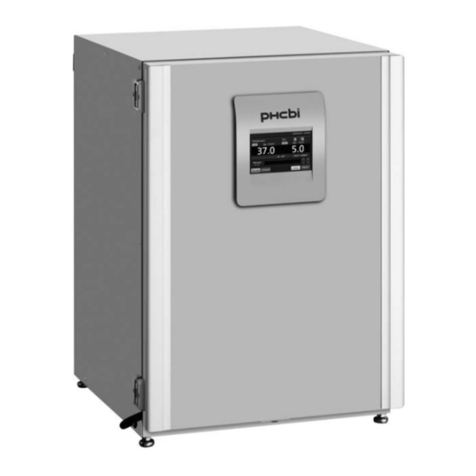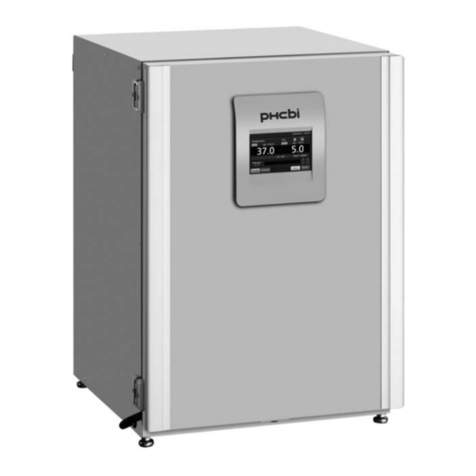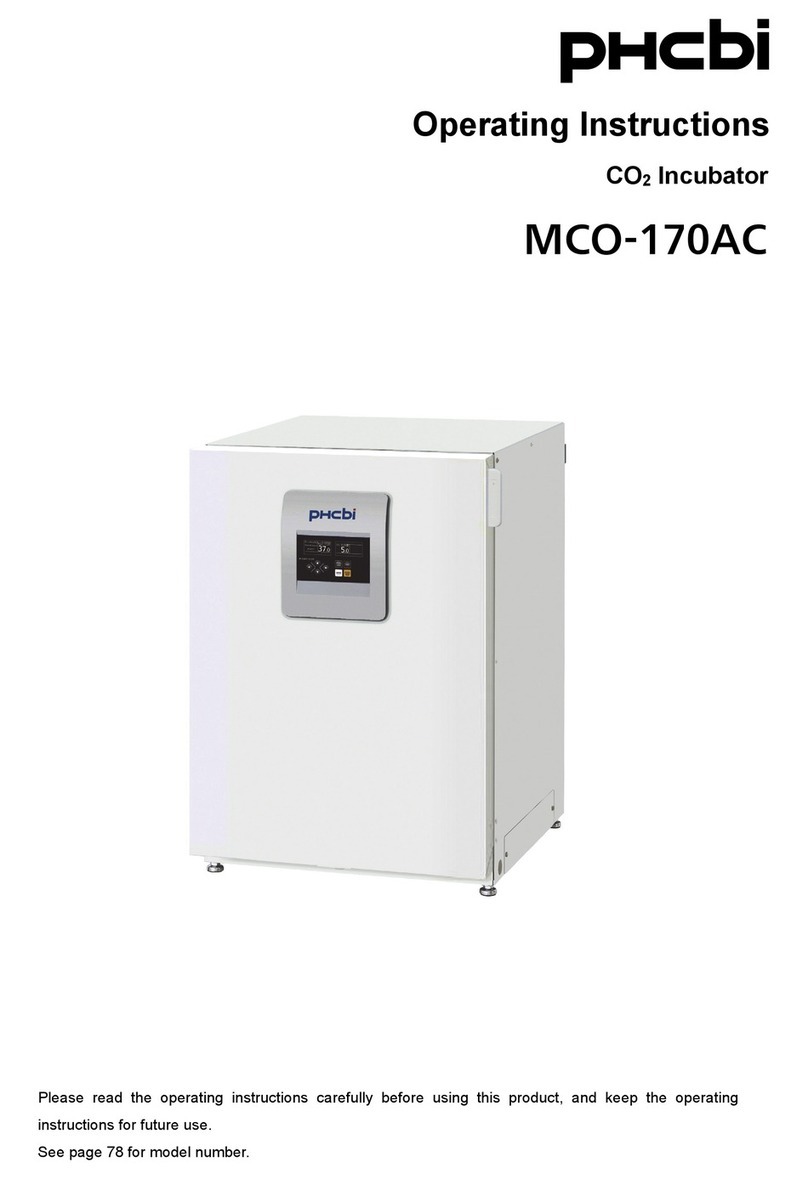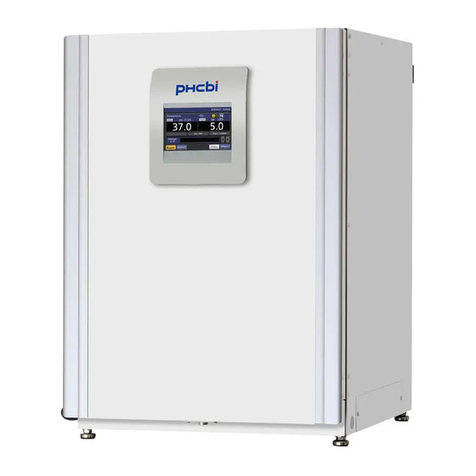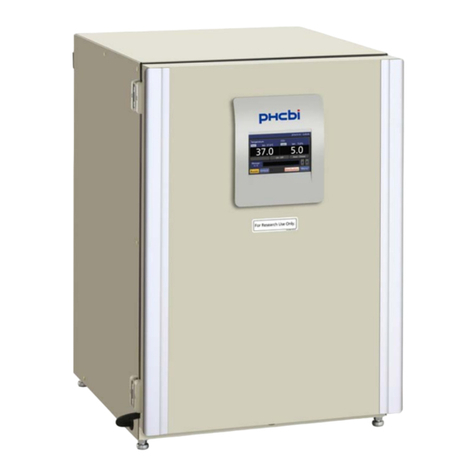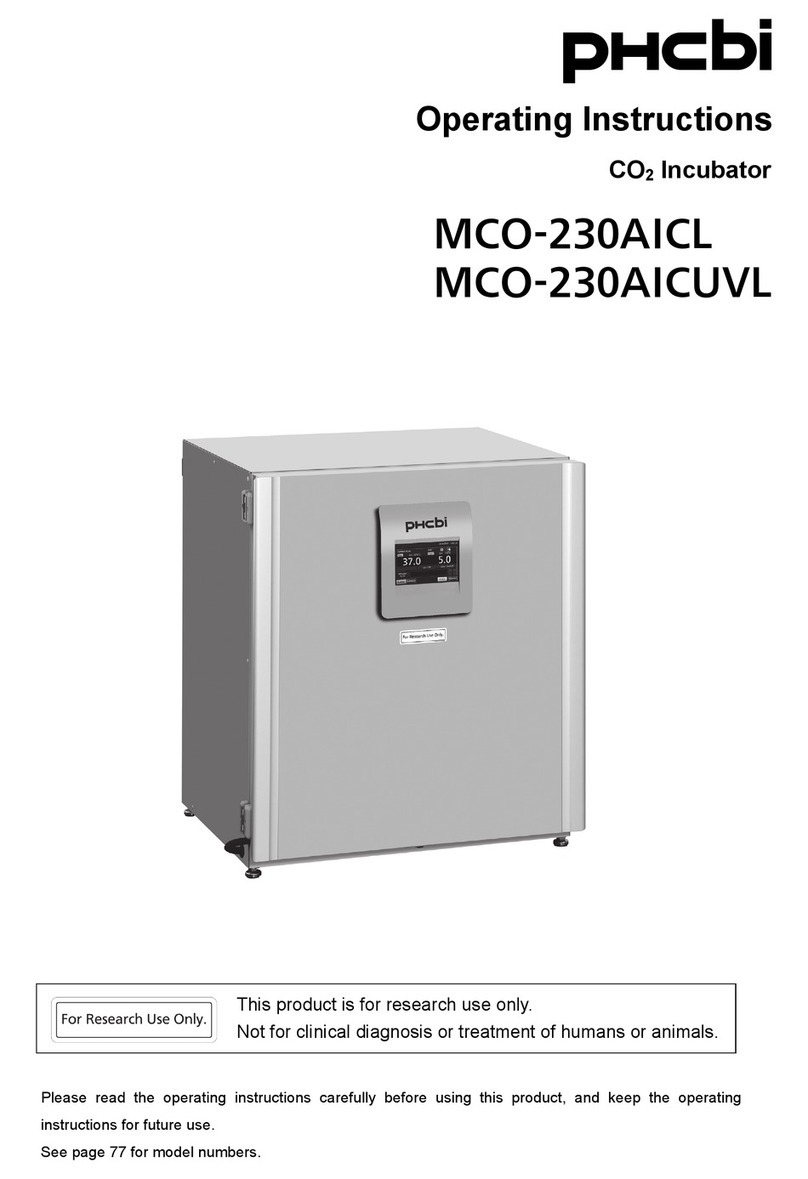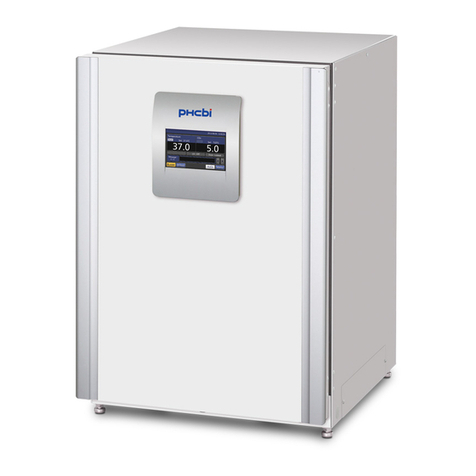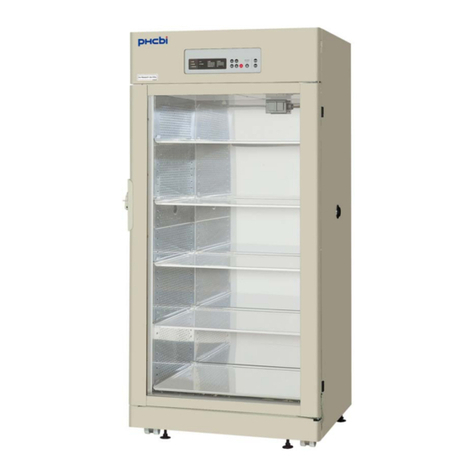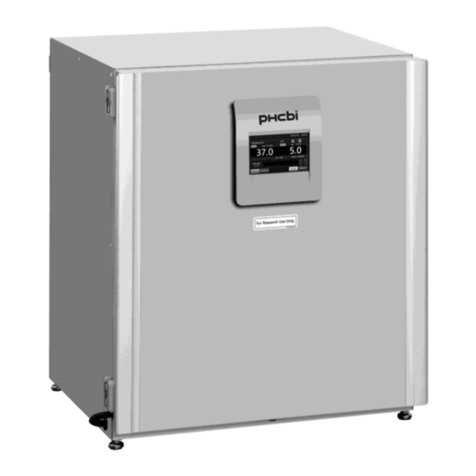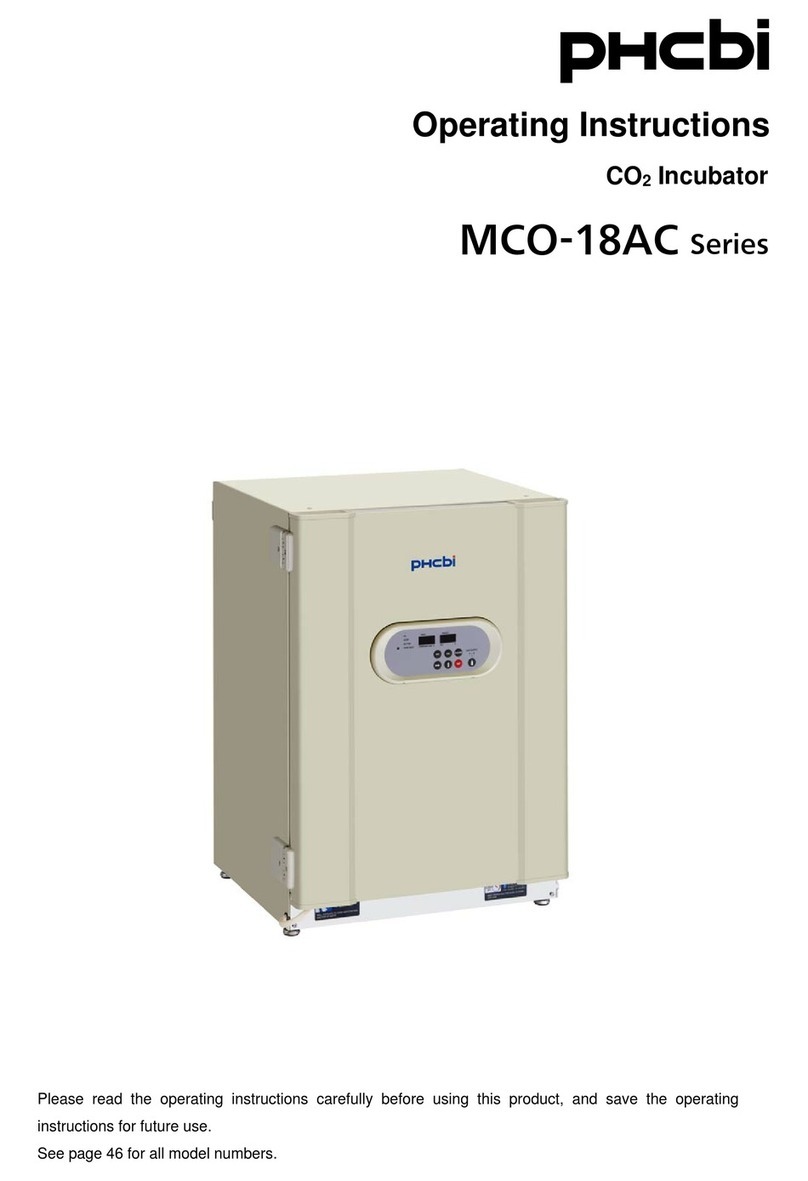
1
CONTENTS
INTRODUCTION ................................................................................................. 2
PRECAUTIONS FOR SAFE OPERATION.......................................................... 3
LABELS ON THE INCUBATOR .......................................................................... 8
ENVIRONMENTAL CONDITIONS ...................................................................... 8
INCUBATOR COMPONENTS ............................................................................ 9
Control panel and keypad .............................................................................. 11
Remote alarm terminals ................................................................................ 13
INSTALLATION SITE ........................................................................................ 14
INSTALLATION ................................................................................................. 15
Connecting a CO2gas cylinder ...................................................................... 16
Connecting a N2(or O2) gas cylinder ............................................................. 17
Connecting a gas injection nozzle.................................................................. 18
PREVENTING CONTAMINATION .................................................................... 19
PRECAUTIONS FOR CULTURES.................................................................... 20
INITIAL CLEANING METHOD ......................................................................... 21
REMOVING INNER ATTACHMENTS ............................................................... 22
INSTALLING INNER ATTACHMENTS.............................................................. 24
FILLING THE HUMIDIFYING PAN.................................................................... 25
WATER LEVEL SENSOR.................................................................................. 26
ROUTINE MAINTENANCE................................................................................ 27
CORRECT OPERATION................................................................................... 27
OPERATION OF KEYS ON THE CONTROL PANEL....................................... 28
SETTING OF ALARM RESUME TIME.............................................................. 29
Operation after power failure.......................................................................... 29
KEY LOCK FUNCTION ..................................................................................... 30
AUTOMATIC GAS CYLINDER CHANGEOVER ............................................... 31
UV LAMP ........................................................................................................... 33
Change of setting for UV lamp ON period...................................................... 34
Precautions when using the UV lamp ............................................................ 35
Lighting the UV lamp for 24 hours.................................................................. 36
ALARMS, SAFETY, AND SELF-DIAGNOSIS ................................................... 37
CALIBRATION
Temperature calibration ................................................................................. 39
O
2calibration.................................................................................................. 40
CO
2calibration ............................................................................................... 41
TROUBLESHOOTING....................................................................................... 42
DISPOSING OF THE O2/CO2INCUBATOR...................................................... 44
STACKING INCUBATORS................................................................................ 49
SPECIFICATIONS............................................................................................. 51
PERFORMANCE............................................................................................... 52
SAFETY CHECK SHEET .................................................................................. 53
